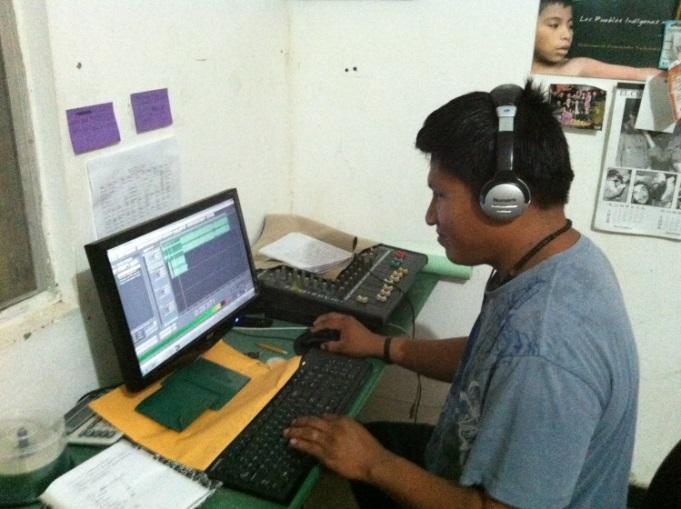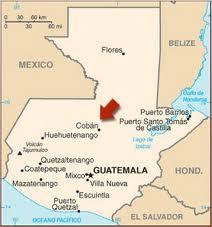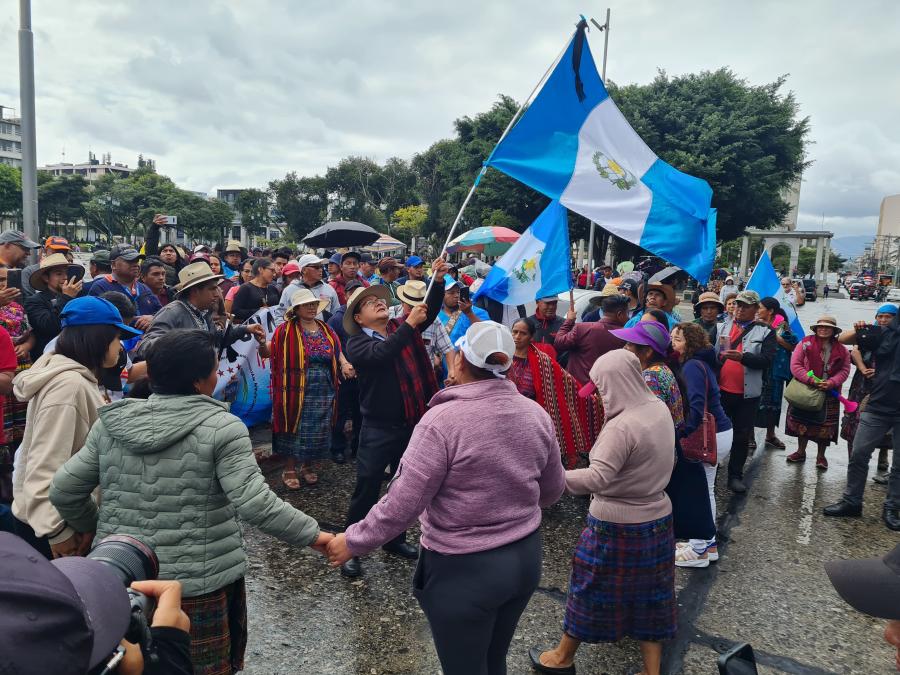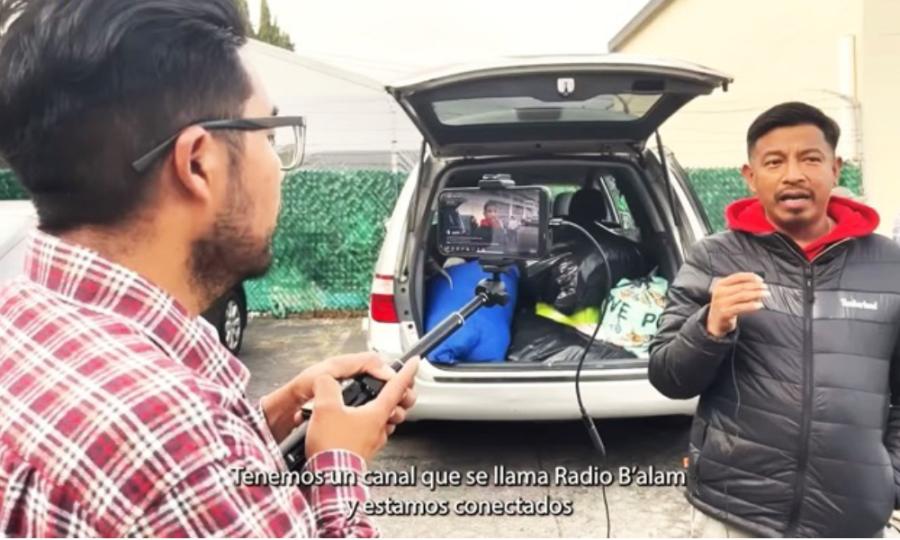
By Ava Berinstein
When I first began my journey, it was 36 years ago. There, in the highlands of Guatemala, in the region of Alta Verapaz where Q’eqchi’ is spoken and traditional Maya ways are (still) practiced, and the mountains are alive...there, in the “land of the true peace,” (Jessup and Simpson, 1936); that is where my journey began.
Francisco Choco’oj Paau, a Q’eqchi’ Maya storyteller from Cobán, then in his late fifties, would take his time to prepare to tell a story. He would say his prayers; he would burn his (copal) incense. That’s because, these weren’t just stories, they were ancient legends; legends that had been passed down from generation-to-generation; told in a precise way; told in the same way; for hundreds, possibly thousands of years. Each legend held a custom, tradition, or particular insight into Maya beliefs and culture. Each legend also held a moral about Maya life.
The Q’eqchi’ Maya are descendants of the ancient Maya civilization that flourished in pre-Columbian times in Mexico and Central America from 1000 B.C. – 1500 A.D. Q’eqchi’ is a Mayan language of the Eastern Mayan K’ichean (formerly spelled Quichean) branch. The formal classification is: Proto-Maya/ Eastern Mayan/ K’ichean-Mamean/ Q’eqchi’ (Campbell and Kaufman 1985). They are the predominant Maya group in the central highlands and northern lowlands of Guatemala. There is an estimated population of 400,000 in Northern Alta Verapaz, Guatemala and the southern Petén departments of Guatemala (Lewis, 2009), with a total population in all countries including Belize and El Salvador of 423,500. However, population estimates vary widely. According to a UNESCO 2002 census, the Q’eqchi’ population in Guatemala and Belize is estimated to be 716,101.
Despite the vast Mayan population, Mayan languages face a different type of threat: the extinction of verbal art. The need to document this lost verbal tradition puts the documentation of this culture at risk.
Maya Culture Endangerment
There are many variables contributing to the endangerment of the Mayan oral tradition. First and foremost, the elders are dying and legends aren’t being passed down to the next generation. This means that the next generation won’t be able to continue to pass on the oral tradition to their children and their children’s children. For a culture to thrive, this is a necessity. Another contributing factor is that the younger generation isn’t self-identifying with their native Mayan language. Maya parents (in Guatemala) are more and more frequently speaking in Spanish to their children rather than in their first language, in the hope that this will provide better opportunities for them to succeed in the world. These instincts are reinforced by the fact that “bilingual” education classes are taught in Spanish. Sadly, the message for “success” is to: speak Spanish; listen to Spanish radio stations; go to school and receive an education in Spanish; forsake one’s Mayan culture; forsake one’s Mayan first language; and often, forsake one’s traditional Mayan clothing.
Having recently interviewed a Q’eqchi’ Maya educator about the role of the Mayan oral tradition, he said,
“Stories always have morals. They always have morals. It’s a way of teaching us how to live better; how to live with Mother Nature.”-- Luis Cucul, Educator, Belize
The Role of Oral Tradition in Linguistic and Cultural Vitality
When a culture preserves its history through an oral record - and there is no written record - how will the oral literature survive when the oral historians die? How will the Mayan legends be preserved? More importantly: How will the culture continue to be transmitted?
While we understand that language shift can lead to language loss; while we recognize that over half of the world’s 6000 languages are extinct (Crystal 2000); while we understand the risk of language endangerment; it is not yet clear that we recognize with equal urgency, the threat of cultural endangerment. For, as the elders die, they carry with them the oral archives of a culture. The consequences therefore are dramatic.
- Cultural practices are endangered
- Linguistic genres are endangered
- Historical reconstruction across the genus is endangered
- Memories, shared histories, religious and ritual practices, folklore, and legends past down from generation-to-generation are lost.
Now, let’s consider how we might inhibit or defray these possible consequences. How can we:
- Prevent language loss and cultural loss
- Restore collective memory
- Promote cultural identity
Building on over 20 years of linguistic documentation with a focus on the grammatical analysis of Q’eqchi’ Mayan, the Q’eqchi’ Narrative Collection (Berinstein, 2013) is based on a corpus of 21 Mayan oral histories that were collected between 1978 - 1980, primarily in Cobán, Alta Verapaz, Guatemala. This collection of folktales, legends, and ancestral customs is now fully digitized, transcribed, and translated in English, Spanish and Q’eqchi’. These memories form a record of ritual Maya practices and reflect thought and cultural values and now form the corpus for collaborative work with Cultural Survival to broadcast folktales on local, Indigenous-led community-based radio stations in an effort to revitalize the Q’eqchi’ oral tradition, language, and culture.
More importantly, these legends were passed down for hundreds and thousands of years. And it is by word-of-mouth that we have come to learn about Qawa' Tzuul Taq’a, (Lord Mountain-valley), the divine lord of the valleys and the mountains (and everything in between; the Creator). And it is by word-of-mouth that the tradition and rituals for planting corn still survive today, are still practiced today, in the way that the ancient Maya described.
As it turns out, radio has the potential to impact change and language revitalization as it is the one medium that binds Guatemalans together. All strata of society listen regularly. The goal seemed straight-forward enough: Broadcast the Q’eqchi’ narratives in Alta Verapaz, the region in which the stories originate; the region where the 13 mountains live, where Lord Mount Xukaneb looms over the Cobán community. The reality is not nearly as straight-forward as the goal.
Interventions for Language Loss and Possible Solutions: Community-Based Radio
Cultural Survival’s Guatemalan Radio Project (GRP) works with 80 Maya community-based, Indigenous radio stations in Guatemala. Indeed, radio is the medium of choice in many remote areas and is the primary source of news, information, and entertainment. Often, it is the only available instrument to convey critical information about violations of Indigenous Peoples' humanrights, health, the environment, and ongoing events.
Coupled with language revitalization efforts in native communities, community radio storytelling programs are able to revitalize language and culture through engagement in oral literature. When Indigenous Peoples narrate and broadcast folktales, legends, and other speech genres on their community-based radio stations, memories are rejuvenated and it encourages community participation in the restoration of customs and traditions. It also transmits a shared voice, a shared cultural identity.
This is the vision...the hope...the plan for Mayan language and cultural revitalization through community radio.
Sadly, there are still many obstacles that Indigenous People face in order to license and operate a community-based radio station. First and foremost, the Guatemalan Telecommunications Law does not allow licenses for community radio. Because the stations must compete for licenses at public auctions, this makes it too expensive for non-profit, community stations to procure one.
And it gets worse. Although, the Guatemalan Peace Accords have been signed, Mayas must fight for basic human rights, including freedom of speech. To date, the Guatemalan Congress has not yet passed legislation to make it possible for Indigenous Peoples to operate community radio stations.
And it gets worse. A new bill in the Guatemalan Congress, Bill 4479, proposes a reform in the criminal code that would sanction the imprisonment of individual actors and representatives of unlicensed stations, effectively criminalizing community radio with a penalty of up to 10 years in prison.
It had taken me 36 years to get this far. Once I realized that there were no Indigenous stations in Alta Verapaz that were able to broadcast the Q’eqchi’ Narrative Collection, I realized that we had just begun a new journey... And that was when I learned about a community radio station in Belize which was broadcasting in Q’eqchi’ and Mopan Maya. I was given the Radio Manager’s name and contact information and an email introduction from Cultural Survival. I emailed him and didn’t hear anything back. Desperate, I decided to call him. His name was Auelio Sho. He answered. I will always remember our first conversation. I told him that I had a collection of Q’eqchi’ narratives and asked him, rather tentatively, if he might be interested in hearing one. I heard an enthusiastic, “Yes!” Then Aurelio went on to tell me how he still remembers and values how his father would tell him stories throughout his childhood, and how his father explained to him that these stories were in turn told to him by Aurelio’s grandfather and his great uncle. Then, Aurelio said that there is only one elder in Belize who narrates Mayan legends. In the past, he came to the station and Aurelio would record the stories but he no longer comes because the journey is too far and he must work on his farm all day. That afternoon, as soon as we hung up, I sent Aurelio an MP3 file of a Q’eqchi’ folktale called “The Buzzard and the Snake.” And that is how it began. The next time I spoke to Aurelio, he was ecstatic. He said very excitedly that everyone loved the story and they want to hear more. “Send more!” That’s all I heard. And so, every month for five months I sent him a folktale. Folktales about “The Hunter,” “The Toothache,” “The Dance of the Deer,” and “The Snakes of Senahu.” I didn’t realize at the time that Aurelio had begun to create a weekly storytelling broadcast of the Mayan legends and that he began to build life-lessons and teachings into a Radio Program inspired by the mindful practices of the good farmer who petitions Tzuul Taq’a before planting his corn; or the observant shaman who learns how to heal by observing the ways of the world. I didn’t learn about his tremendous impact on the community until I had an opportunity to visit six months later, when I met Aurelio Sho and had an opportunity to see him at work as an announcer at Radio Ak’ Kutan and as a teacher at the Intercultural Maya Educational Center, Tumul K’in.
Radio Ak’ Kutan, Belize
Let us imagine... the impact... if you will... if Mayan legends could be heard on the radio... reaching hundreds or thousands of homes... accessing and connecting with children and their parents.... together... reminiscent of a time when people gathered together to hear a shaman, priest, or elder of the community convey narrative wisdom, teachings, and rituals practiced by their ancestors. Imagine... an Indigenous-led radio storytelling program. That is Radio Ak’ Kutan.
Radio Ak’ Kutan is a community-based radio station located in Blue Creek, Belize. The station broadcasts in three languages: Q’eqchi’ Maya, Mopan Maya, and English. Radio Manager, Aurelio Sho, is fluent in all three languages and is intent that the Maya voice be heard. This non-profit radio station caters to the needs of all of the communities in the surrounding area. It involves local community members and leaders and it broadcasts content overlooked by commercial or mass-media broadcasters.
As soon as I arrived, we went to the Radio station and I transferred the complete Q’eqchi’ Narrative Collection of MP3 files as a contribution to Radio Ak’ Kutan for broadcast on their weekly storytelling program in Q’eqchi’. As described by Aurelio, the impact on the community had been immediate. Listeners from the Toledo district continue to call-in and text the station, asking for more stories. Others are now sharing stories that they remember their parents and grandparents telling them. Survey results of 300 community members and alcalde leaders from 19 communities indicate that 100% of listeners want to hear more stories! As reported from the survey,
“When I hear you speak in my language, it means that you are talking to me. It means, I value it.” (from survey/pc Aurelio Sho)
When I asked educators at Tumul K’in why it is important to broadcast stories on the radio, this is what was said:
“Radio is an important instrument to reach the home, to reach the family. The radio can bring it from the elders and give it to the younger generation, the younger members of the community.” --Victor Cal, Teacher at Tumul K’in
“Having your audience understand the language being spoken on the radio means a whole lot. It means a sense of ownership. ...This opens the door to the communities for participation, giving voice to the voiceless.” Aurelio Sho, Ak’ Kutan Radio Manager
Cultural Identity and the Younger Generation
During my visit, I also spent time working with Aurelio Sho at Tumil K’in, the overnight high school dedicated to serving Q’eqchi’ and Mopan Maya students in the neighboring communities. In Aurelio’s Community Radio Class, I played the original Q’eqchi’ recording of “The Dance of the Deer.” All of the students were already familiar with the dance, as they have seen it and heard about it from their parents. Two boys in the class had performed as deer dancers in the Maya Festival that was held in Belize that summer. While everyone knew about the Deer Dance, no one had heard the legend that explained why it was performed. After hearing the legend, I asked the class if they would like to draw pictures to illustrate the story so that we could create a book with their original artwork. The first question asked was, “Can we have a copy of the book?”
The class of nine students worked on their illustrations with great enthusiasm and when they completed their depiction of the story, each student went to the front of the class and presented it to the others. There was great pride in their voices as they explained to the class how the deer were dying of thirst and that is why they needed to petition Tzuul Taq’a to ask for their drink. Some drew pictures of the deer on their journey to a Rain God; others drew pictures of deer masks and jaguars; and bony animals. Others drew pictures of a lush land, after Tzuul Taq’a saved them. These drawings included a waterfall with a rainbow and birds flying in the sky; and healthy animals drinking water from a river. All of the students are looking forward to the day when the book is printed with their names, their artwork, a picture of the class, and of course, a CD, so that their parents can listen to the story while they read it. That is the current goal...the goal to revitalize Mayan oral literature for the young and elder generations.
As mentioned, we are also hoping to one day broadcast these narratives on community-based Q’eqchi’ radio stations in Alta Verapaz, Guatemala, where I conducted my fieldwork. But until the time when Indigenous Peoples can broadcast freely in Guatemala, we have evidence that hearing one’s stories in one’s own language, is making an impact on the lives of the Q’eqchi’ in Belize.
--Ava Berinstein, Cultural Survival, Linguistics Advisor, and Founder of Cultural Vitality.
For more information about the goal to publish the narratives as a bilingual book/CD Q’eqchi’ – English collection in Belize and bilingual Q’eqchi’ – Spanish collection in Guatemala, visit: www.CulturalVitality.org



